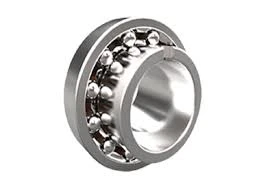
Dec . 04, 2024 08:15 Back to list
spherical cam follower
Understanding Spherical Cam Followers Design, Functionality, and Applications
Spherical cam followers are specialized mechanical components that play a crucial role in various machine automation and control systems. The concept of a spherical cam follower revolves around its design, functionality, and range of applications that extend across various industries, from automotive to robotics. This article aims to provide a detailed overview of spherical cam followers, elucidating their working principles and significance in mechanical engineering.
Design and Construction
A spherical cam follower is engineered to allow for smooth and efficient motion transfer between a cam and a follower. The design includes a spherical roller or ball that makes contact with the cam surface. This spherical interface allows the follower to maintain constant contact with the cam, regardless of the cam's profile or motion direction. The design can be traced back to basic mechanical principles, where a rotating or oscillating cam interacts with a follower to convert rotary motion into linear motion.
The primary components of a spherical cam follower include
1. Cam Profile The shape of the cam determines the motion characteristics it imparts to the follower. It can range from simple shapes, such as circles, to more complex profiles designed for specific applications.
2. Follower Body The spherical follower can be made from high-strength materials, ensuring durability and performance under significant loads.
3. Mounting Mechanisms Proper mounting is critical for maintaining alignment and stability during operation. Different mounting options are available, including fixed, pivoted, or adjustable positions depending on the application requirements.
Functionality and Working Principle
The working principle of a spherical cam follower is based on the relationship between the cam and the follower. As the cam rotates, its profile interacts with the spherical surface of the follower. This interaction allows the follower to move in a specific path determined by the cam shape.
spherical cam follower

When the cam rotates, it exerts force onto the follower, which translates to controlled linear motion. This mechanism is particularly useful in applications where precise movement is necessary. The spherical design of the follower reduces friction and wear, increasing operational efficiency, which is crucial in applications requiring high-speed and high-precision movements.
Applications
Spherical cam followers find applications across a wide range of industries
1. Automotive Engineering In automotive engines, cam followers are essential components in valve timing mechanisms. They help in opening and closing valves at precise intervals, enhancing engine performance and efficiency.
2. Robotics In robotic arms and systems, spherical cam followers facilitate smooth movement and positioning of components. Their ability to maintain constant contact with the cam profiles makes them ideal for applications requiring repetitive motions.
3. Manufacturing Spherical cam followers are used in automated production lines, where they contribute to the operation of conveyors, sorting systems, and assembly machines. They ensure that machinery operates reliably and with minimal maintenance.
4. Textile and Packaging Industries These followers are utilized in various machinery, where controlled movement is critical for producing high-quality textiles and packaging products.
Conclusion
In summary, spherical cam followers are vital mechanical components that enable smooth motion transmission in various engineering applications. Their unique design and functionality make them indispensable in fields requiring precision and reliability. As industries continue to evolve, the importance of understanding and implementing spherical cam followers will only grow, ensuring the continued advancement of automation and mechanical systems. Whether in automotive engines, robotics, or manufacturing lines, these followers illustrate the elegance of mechanical design and engineering.
Latest news
-
Premium Deep Groove Ball Bearings | High Speed & Reliability
NewsAug.29,2025
-
Durable Scaffolding Clamps - Secure & Reliable Tube Connectors
NewsAug.28,2025
-
Common Failures in Thrust Ball Bearings and Solutions
NewsAug.22,2025
-
How Tapered Roller Bearings Can Take Shock Loads
NewsAug.22,2025
-
Angular Bearings in High-Precision Spindles
NewsAug.22,2025
-
The Impact of Misalignment on Cylindrical Roller Bearing Performance
NewsAug.22,2025
